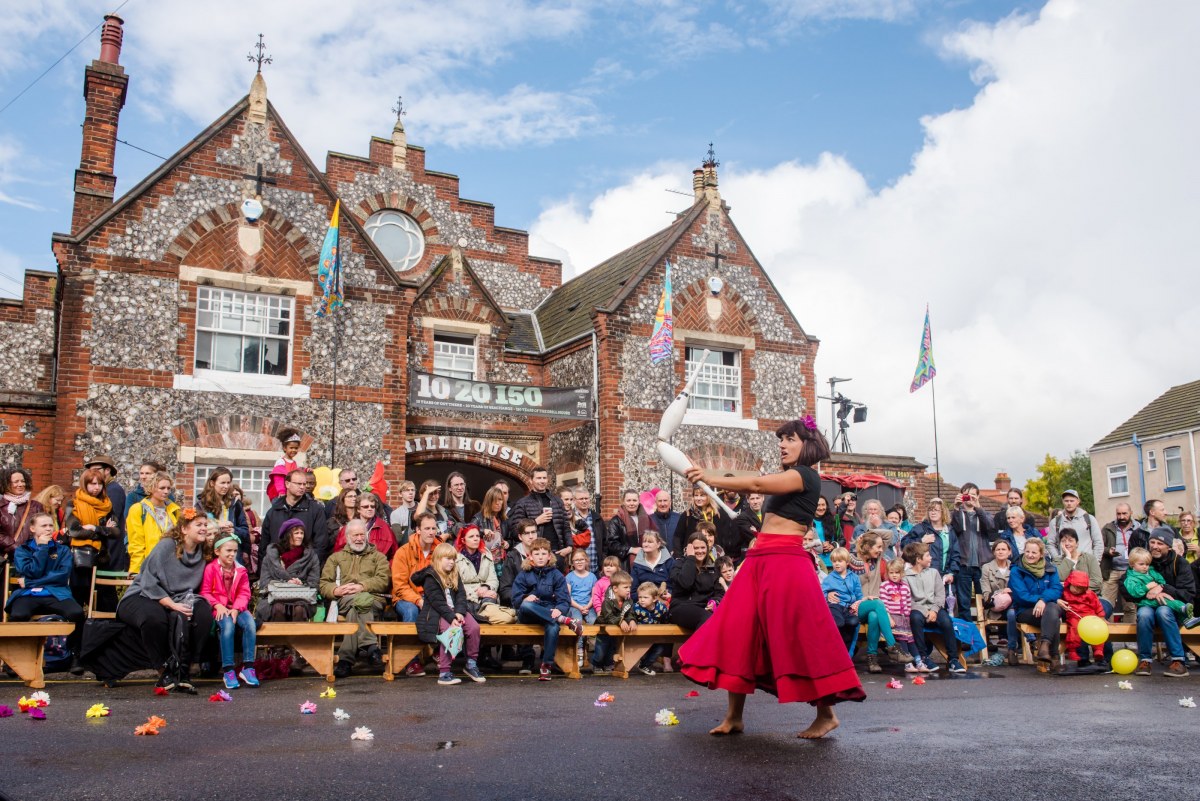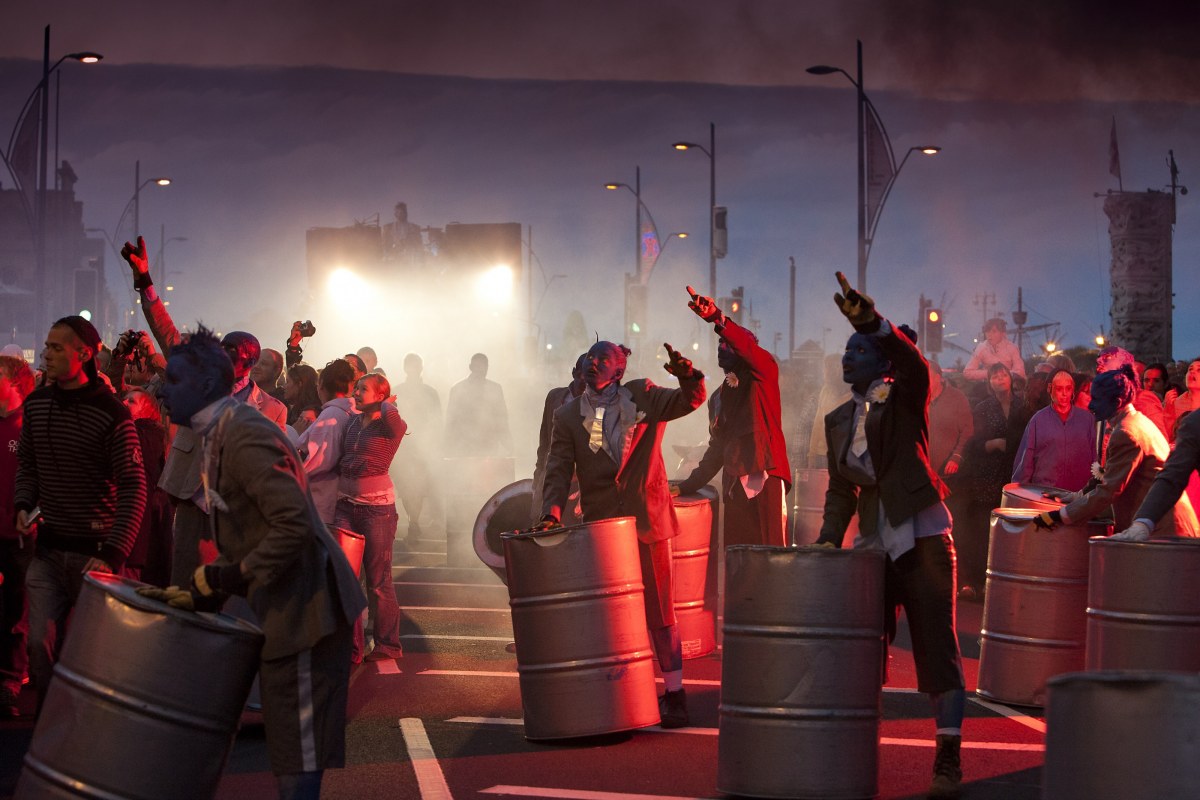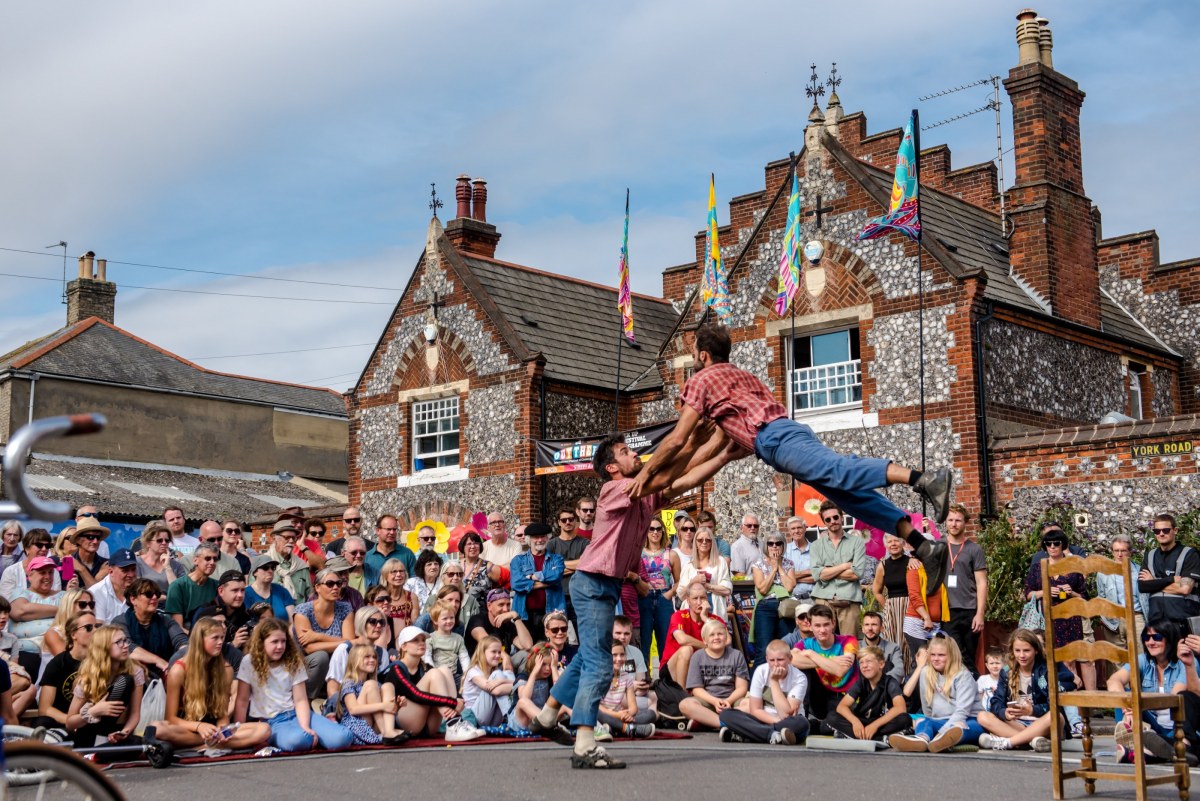

As FRESH STREET #5—the International Conference for the Development of Outdoor Arts—prepares to convene in Great Yarmouth from May 28 to 30, 2025, the spotlight turns to the town's vibrant cultural landscape. This year's edition, co-organised by Circostrada Network and Out There Arts, marks a significant moment as it brings together artists, programmers, producers, researchers, and policymakers from across Europe and beyond to reimagine the future of outdoor arts.
In this context, Circostrada presents an interview with Joe Mackintosh, Artistic Director and CEO of Out There Arts. Joe shares insights into the evolution of Out There Arts, reflects on the challenges and milestones that have shaped the organisation's journey, including the inception of the Out There Festival in 2008 and its growth into one of the UK's leading outdoor arts festivals.

Out There Arts has evolved from producing the annual Out There Festival into a nationally significant organisation supporting circus and outdoor arts. Can you outline the key stages of this development and the vision that has guided it?
The evolution is a bit longer than that actually. We existed for 10 years prior to starting the festival, delivering a range of participatory projects with marginalised communities and some small events. It was good work – especially for those participating – but it was pretty invisible for the general public and at the same time the town lacked an overall sense of vibrancy. We were just a very small charity based in an office, and it was also very difficult for us to have easy access to spaces for workshops and events, and we had begun to explore using public space a bit and seeing that that was a great way to engage in places of low engagement like Great Yarmouth. We started the festival in 2008 - the same year than the financial crash - both as a platform for artistic community projects we had and also to start growing audiences. The first edition was a mix of indoor and outdoor events at the end of October which was a big mistake! The weather was awful and we had the French company Les Alamas Givrés here who told me bluntly “Octobre – c’est pas possible, Septembre – oui” “. Even with the meteo disaster we could see the outdoor work was engaging far more than the indoor work so we moved the festival to September, and focussed more on the outdoors. At this time we were involved in a growing number of European projects including the start of ‘ZEPA’ – a UK/France cross-border Street Arts partnership. Through this I was discovering an incredible new world of amazing outdoor work and thinking ‘Yes! This is what this place needs! This can work here!’ So the vision began to take shape – that we should build work in public space that can engage local people but also attract visitors, and with a sense of weirdness and fun which is very much the nature of this place. Great Yarmouth is a very ‘out there’ place, on a lot of levels, hence the name… The 2009 edition took this new shape and just worked fantastically well – suddenly there were thousands and thousands of people coming, and we were already presenting and producing some work that was very fresh and unusual for the UK. Like Journey to the Edge of the End of the World by Les Trois Points Du Suspension with its catapulted flying human crow – an absolutely incredible show. And then in 2010 we were the first place in England to present Generik Vapeur with the anarchic blue guys with barrels in the rock and roll riot that is Bivouac. Minds were blown. Momentum created. The lid had come off Pandora’s box, and it was never going to go back on as far as we were concerned! We were very, very driven and within a few years Out There was one of the biggest outdoor arts festivals in the UK. We had very little regular annual funding at this time, so this was coming about through us being very active and creative about fundraising, including quite a lot of EU projects. We worked through 22 EU projects over 15 years and at that point I had six major EU projects at the same time – that’s really a lot. And we were using this and the growing significance of what we were doing to gain more support from the City and from Arts Council England and others. It is very much the case that you actually have to somehow show and do these amazing things first before you get the support for them and not the other way round – it seems illogical and impossible but that kind of is how the world works much of the time. In 2022, we acquired the Drill House to become a multi-purpose creation space and our base. Again we started this without support. This very large building had become vacant following huge County Council cuts to the Youth Service and we just agreed to buy it, with support. We figured that once we got going with it, support might follow. We bought it on a Wednesday in February and the following Monday Prince Charles (now King) came to open it and we started using it immediately as it was. Crazy, ey? And so important. In the next years we then secured a couple of million pounds to develop the building and the spaces around it (evicting the local drug dealers!), built a year-round programme of creation, participation and engagement alongside the festival and secured more stable support. There’s a lot more to the story than that of course, but you get the idea…
The Out There Festival has played a crucial role in fostering international collaboration in outdoor arts and contemporary circus. How do large-scale events like this contribute to strengthening regional partnerships while also enhancing the profile and development of contemporary outdoor performance on a global scale?
These collaborations and partnerships have to work both ways or they would not happen. Our international collaborations were actually central to us in building the festival and our work here in the first place, they were not ‘add-ons’ to the side. They were also hugely instrumental in supporting international exchange of artists and co-commissions which of course is good for the wider sector. Now that there is both much less EU support for culture across its programmes and the UK has left the EU, we can’t do this in quite the same way, but it’s still very important and we are supporting it through more informal flexible reciprocal projects rather than heavily bureaucratic EU funding. Not every event can be ‘large scale’ of course, even if we would like it to be and they all have value. But there is something special about these larger festivals in that having such a volume and diversity of work attracts a lot of people (public, artists, pros, etc.), they encounter a lot of unexpected things in the mix and they get to connect with each other while they are here. This generates inspiration and energy, all kinds of things happen as a result of that.

Out There Arts has a strong focus on presenting and supporting work in public spaces, often incorporating large-scale and unconventional performances, as well as placemaking impacts, contributing to transforming the city. Why is this approach important, particularly in the context of Great Yarmouth?
Beyond the very obvious transformational impact on the town that takes place during the days of the festival itself, we have a strong interest in the long term and year-round placemaking impact on the town. Some of this clearly comes directly from the festival - it attracts visitors who spend money, support jobs etc. Some of it is more organic – people come and see the place in a new light, they come back at other times of the year, they move here, start projects here. And then there is our wider year-round work that has an impact. We have developed the Drill House complex in the heart of one of the UK’s most deprived neighbourhoods, just next to the ‘little Portugal’ area of King Street, where we host an extensive programme of events, classes, workshops largely aimed at local families and free or very low cost. We opened a new space – The Ice House in May 2025 and we have been involved in many other capital projects, largely developing historic buildings, streetscapes and public space for cultural use. This combination of physical development alongside activity can make a significant difference to the look and feel of the place. We have also acquired one house for artists that is more intended for long term residency rather than short stays for creations. Affordable housing is a huge issue for artists in many places. Over the next decade we plan to acquire more houses to grow a creative collective that might still tour for work but have a direct interest in the cultural vibrancy and community of this place. With the combination of space for training, creation, events, fabrication, storage, administration, low cost housing, employment/gigs, promotion/development, mutual support, a very big festival and a critical mass of artists living here we believe that Great Yarmouth can become an increasingly magnetic hub for the sector. I genuinely believe shared moments of cultural experience for free in public space are important to all of us everywhere from small villages to big cities. These shared human experiences have been central to generating feelings of togetherness, belonging, equality, community, wonder, and joy for tens of thousands of years. To do this should be a right not a privilege. In a place like Great Yarmouth this is extra important where widespread residents’ low incomes are a major barrier to ticketed cultural experiences. There is also significant perceived social separation here – for example between locals and tourists, white British residents and extensive migrant communities, low paid locals and those better paid who choose to live further out in the county, culturally-rich thriving middle class Norwich (county capital) and much more deprived Great Yarmouth. Outdoor Arts brings all of these people together. The festival is a special joyous moment that all can be proud to be a part of. Indoor ticketed work is of course valuable and wonderful - especially in a rainy country! - and we also run several venues, but outdoor arts is special.

What do you see as the biggest challenges facing the outdoor arts and contemporary circus sectors in the UK today, and what steps do you think need to be taken to strengthen their future?
Support for culture as a whole and wider public services are at grave risk in the face of the ongoing neo-liberal project which sees wealth continue to move upwards to further enrich the wealthiest while perpetuating the notion that there is a not enough for ‘frivolous’ culture and public services. Free Outdoor Arts is especially vulnerable to death by a thousand cuts – ‘why subsidise this when it could be ticketed, why do something big when it could be small, why do every year when it could be bi-annual etc etc’. There are no easy answers, but I suggest three areas:

Joe Mackintosh is the Artistic Director and CEO of Out There Arts – a National Centre for Outdoor Arts and Circus based in Great Yarmouth on the East Coast of England. Joe has built the organisation over 25 years. The work of Out There includes the Out There International Festival of Street Arts and Circus, The Drill House Creation Centre, Artists Housing, the Ice House, Local, National and International partnerships for creation, touring and community participation, and a wide range of year-round events that engaged 120,000 people In Real Life in the last year.
Great Yarmouth is a disadvantaged area and Out There has a strong emphasis on socio-economic regeneration, community empowerment, and growing participation and engagement with those otherwise least engaged in Culture including the large diverse migrant community in the neighbourhood around the Drill House. Out There was largely grown through International Work including 23 EU projects between 2007 and 2021. Post-Brexit, Internationalism through Reciprocation remains central to the organisation’s mission.